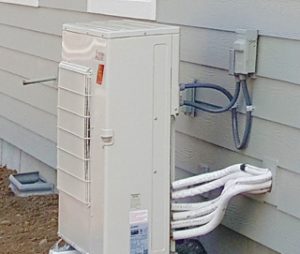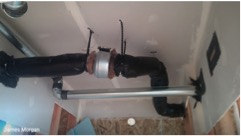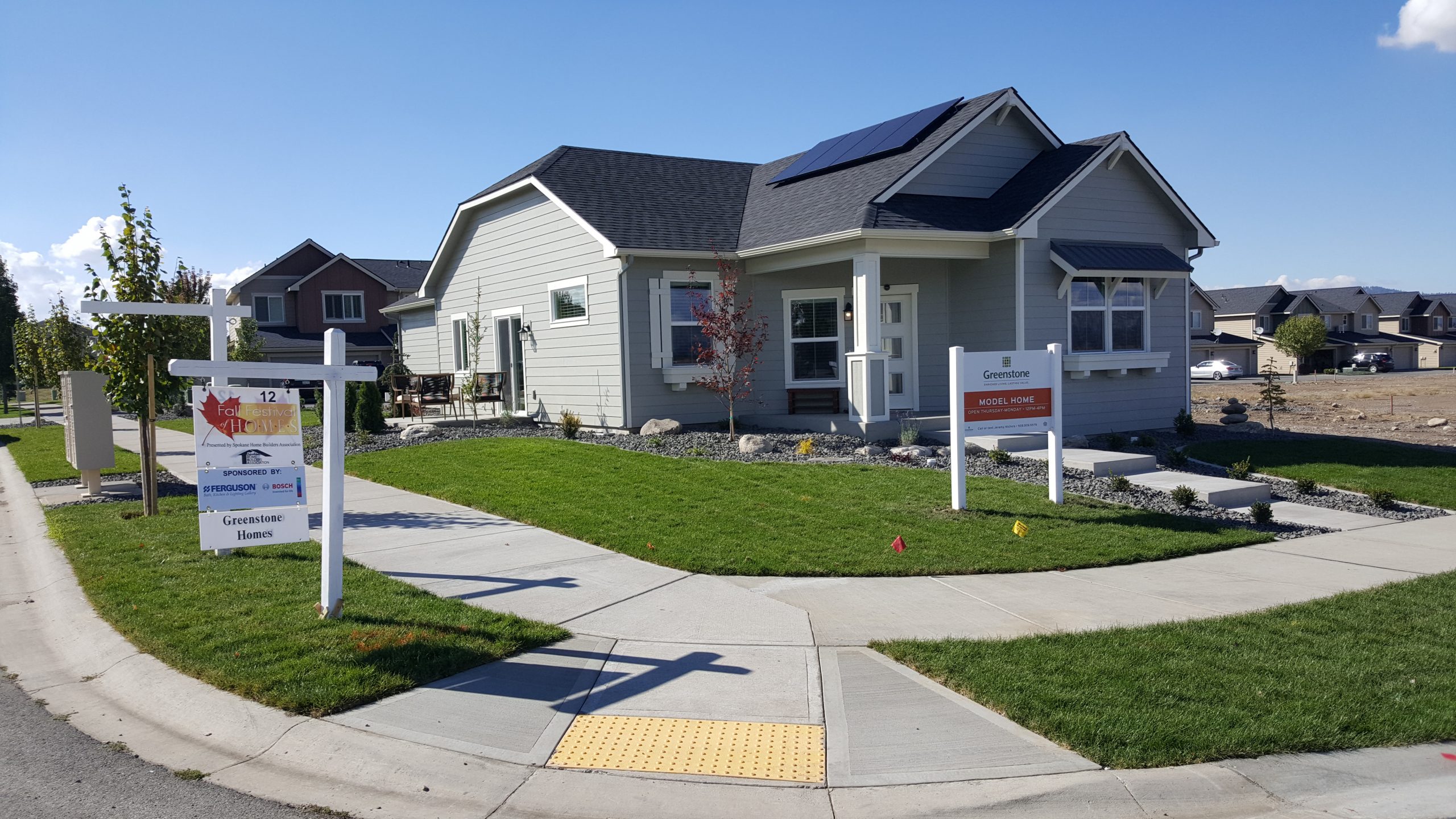High-performance homes require better HVAC design strategies than code-level homes, and builders frequently find that the high-performance HVAC learning curve can be challenging. HVAC contractors who work with high-performance builders can’t use the same strategies that work for mainstream builders. Here are a few design concepts and strategies to help builders better understand HVAC design for high-performance homes.
Historically, many homes in northern latitudes have had only heating systems, but this is changing. In these heating-dominant climates, HVAC system designs would naturally first need to meet the heating needs of a building. So, the system should be designed to provide enough heat, and secondarily meet the air conditioning needs of a building. In parts of the country with a cooling dominant-climate, the cooling and heating load calculation are approached from the other direction. Now split-ductless systems provide both cooling and heating in one energy efficient system that is appropriate for both heating and cooling climates.
High-performance homes have significantly lower cooling and heating requirements than code-level homes. A 1,500-square-foot home in Climate Zone 5, for example, might have a design heating load of approximately 35,000 Btu/h if it is built to current codes. That same home built with a high-performance envelope, might have a heating load of approximately 26,000 Btu/h. If this same home were built to the Passive House level, the heating load might be below 15,000 Btu/h.
Split-ductless systems are a great solution for high-performance homes with low cooling and heating needs. The systems are energy-efficient and come in a range of capacities to match any size home.

This small mini-split unit provides heating and cooling for an entire home thanks to some clever design and installation practices.
Split-ductless systems offer a variety of options to serve any space. They can connect multiple ducted or ductless indoor units to one outdoor compressor system. These options allow split-ductless systems to fit many different circumstances and visual requirements. For example, Mitsubishi Electric Cooling & Heating (Mitsubishi Electric) now offers a one-way cassette that fits between standard joists and is flush mounted on the ceiling when homeowners/builders want to blend the HVAC design aesthetic into a room and conceal the indoor unit.
How to Design an HVAC System
HVAC system design includes three basic steps: calculating heat loss and gain, selecting equipment and designing duct runs. For each step in designing an HVAC system, there is an associated technical manual provided by the Air Conditioning Contractors of America (ACCA). The ACCA technical manuals are so widely adopted that some design steps are commonly referred to by the name of the manual. Step one in designing an HVAC system is conducting a room-by-room cooling and heating load calculation. This Manual J® calculation. is generally done by the HVAC contractor or mechanical engineer after the builder has provided the envelope details and a set of plans using software tools such as Wrightsoft®, Adtek, or SpecPro.
Step two in the HVAC design process is selecting the right size system using Manual S®. Undersized systems will not provide enough heating to provide comfort on cold winter days. Oversized systems increase costs needlessly and will not perform properly due to short cycling when the system is too large for the house and rapidly reaches the desired temperature. An appropriately sized system will run longer, which puts less strain on the equipment. the HVAC system repeatedly turns on and off, reducing unit efficiency and comfort.
If you are using compact ducted indoor units, there will be a third step: proper duct design. Duct design is accomplished by following the procedures in Manual D®for static pressure and CFM flow and then Manual T ® (for termination) to select register grilles. Duct design can be challenging and poor design often leads to comfort problems.
Unique HVAC Demands for High-Performance Homes
In high-performance homes, all ductwork should be inside the conditioned space. Any time ductwork is situated outside of conditioned space, there is an energy penalty and the risk of condensation in/around the ductwork increases. International Energy Conservation Code® (IECC) 2018 may allow ductwork to be buried in insulation, but this still considered outside the conditioned space. Ducted mini-split systems are designed with these space constraints in mind and should always be installed within the conditioned space.
Ductless systems also require room-by-room considerations. Bedrooms may have very low heating or cooling demands, yet some builders and HVAC contractors put a wall-hung head in every bedroom without considering the actual needs of each bedroom. This is likely to increase system costs and lower system performance.
Here is an example of how to solve the low load challenge in the bedrooms of a high-performance home:
A certified zero energy ready home with a solar electric system was built by Greenstone Homes in the Spokane, Washington area. It has a total heating load of 21,749 Btu/h. Bedroom two is a corner room with two exterior wall surfaces and has a heating load of 3,249 Btu/h. Bedroom three is an interior room with a short exterior wall and a heating load of only 1,709 Btu/h. Neither of these bedrooms needs much heating or cooling. In order to right size the heating and cooling delivered to both rooms, the builder and HVAC contractor decided to use a wall-mounted unit in bedroom two with a transfer fan to push conditioned air into bedroom three. A transfer fan is an effective and economical way to move conditioned air into a low-load space. See this video for more information on the Greenstone Net Zero Demonstration Home.

A small transfer fan moves conditioned air into a room that is too small for a typical wall-mounted mini-split head unit.
The Ins and Outs of Load Calculation
Load calculations are based on the coldest and hottest days of the year and are done to ensure that comfort will be provided during the extremes. However, most of the year, temperatures fall somewhere in the middle. This middle territory is referred to as the “shoulder season” for HVAC design. The ability to go from maximum capacity to a low-capacity output is called the “turndown ratio.” Value-priced split-ductless systems frequently do not ramp down to lower capacities and therefore have poor turndown ratios. If a system has a poor turndown ratio, it is more likely to turn off and then back on frequently. Called short cycling, this situation degrades comfort, energy efficiency, and equipment life.
Oversizing systems is frequently seen in the field. It indicates a poor job of doing room-by-room load calculations or the existence of shortcomings in the distribution design. Cooling and heating loads are getting lower and lower as building codes become more stringent. In high-performance homes, very low cooling and heating loads require new thinking to ensure the HVAC system performs just as well as the building envelope.
Earlier, split-ductless systems (including unitary air source heat pump systems) had poor cold climate performance. In the last 10-15 years, Mitsubishi Electric and other manufacturers have created air source heat pump technology that is designed to perform efficiently in cold climates. In cold climate areas with design temperatures below 30°F, it is important to select a system which will perform efficiently without supplemental heat. Mitsubishi Electric Hyper Heat systems use technology that will provide energy efficient heating in the winter down to -13°F. The Northeast Energy Efficiency Partnership (NEEP) has a cold climate air-source heat pump qualified product list that is a great resource for selecting a system which will perform well in these areas.
Teamwork
Some HVAC contractors focus on commercial HVAC work, some focus on residential remodel projects, and some focus on residential new construction for mainstream builders. We encourage high-performance builders to look for an HVAC contractor who specializes in high-performance new construction. During the design process, teamwork between the builder and the HVAC contractor is essential. Other allies helpful in the HVAC design process are energy raters and HVAC manufacturers who are committed to helping high-performance builders develop the most effective HVAC strategies.
The Greenstone Net Zero Demonstration Project is a good example of successful collaboration between builders and HVAC professionals. Teamwork is important as builders master the high-performance home building learning curve.
Greg Davenport is the Performance Construction Manager in the Pacific Northwest for Mitsubishi Electric and is available for assistance with high-performance projects.


Access Doors and Panels says:
HVAC systems make it easy to regulate our houses’ temperature and circulation, which keeps us from overheating. Thank you so much for the information. I am looking forward to your next post!